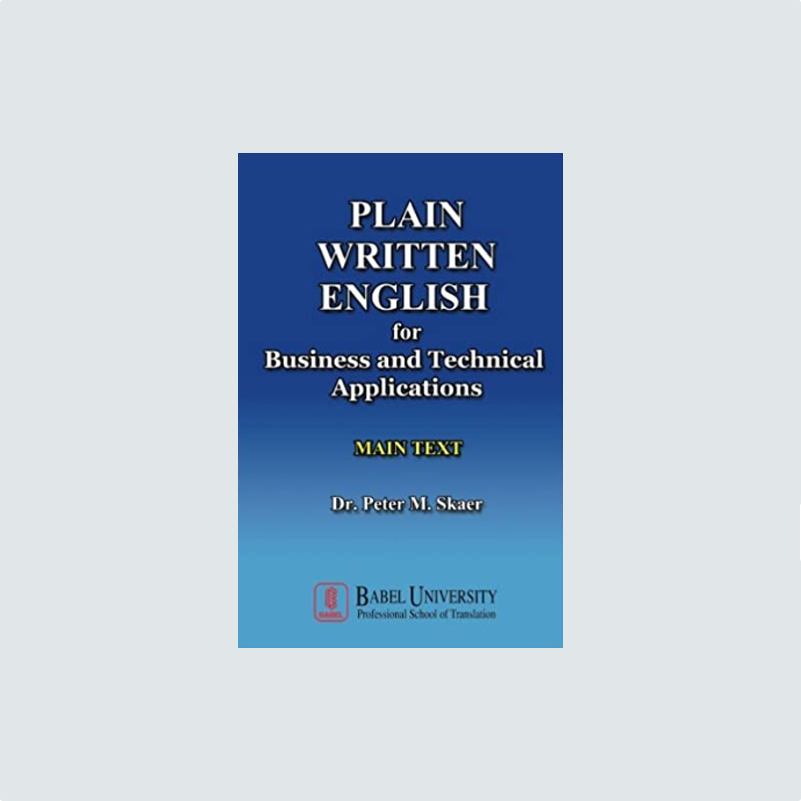説明
★内容★
Plain English introduces a system of writing clearly and effectively for all writers of English, the world over.
In response to the clear emergence of English as the preferred language for both international business and travel, the global lingua franca of the modern age, Plain English is a system that can help writers to communicate their ideas clearly, effectively and directly, ensuring a one-to-one relationship between the author’s intended message, and the reader’s perceived message.
Plain English as it is introduced here is not just a set of random guidelines and advice, but rather, a complete system of English usage that embodies four rigorous principles, which further address sixteen basic guidelines, which in turn govern eighty separate rules of usage.
These four basic principles of Plain English are
(1) Cohesiveness (unified, logical, consistent, complete, etc.);
(2) Directness (clear, succinct, positive, etc.);
(3) Economy (brief, uncluttered, minimal, etc.), and;
(4) Appropriateness (polite, respectful, correct, neutral, etc.).
Plain English recognizes the shortcomings in the fact that not all grammatically correct sentences in English are necessarily clear, or concise.
In fact, there are many “grammatical” sentences that are very difficult to understand because of vague or ambiguous words or syntax, overly long and dense sentence structures, confusing pronoun and article usage, and so forth.
The book assumes a professional focus; in other words, it is most especially useful for those who make their livings as writers, such as translators, journalists, novelists and so forth, but also other areas of business are addressed, including writing business letters and email, reports, invoices, and so forth.
And, while there is a professional focus, of course virtually all of the principles, guidelines and rules are applicable in just about any writing situation.
The Plain English book asks and answers many questions important to the writing process, so, to give you some examples, before you write anything, it is important to address the following questions, among many others: Why are you writing? (determining purpose is essential to word choice, writing style and overall organization); Who are your readers? (knowing your target audience is equally essential so that your language and style is adjusted to fit your readers’ levels of expertise), and; What should you include and what should you leave out? (an often overlooked area concerning how much is enough, and how much is too much).
The questions above are just a few of the many issues covered in the text, and naturally only relate to the starting point of writing a particular text, but should give you an idea of how the book of Plain English takes a direct and systematic approach to the task of writing clearly and effectively. The text itself is divided into four sections, one for each principle, and contains a total of 80 units, one for each of the 80 rules of Plain English.
The text can be used both as a general learning guide, but also as a handy reference manual.
There are opportunities (exercises) for you to practice your skills, following each unit, with suggested answers accessible online.
The text has been used successfully worldwide in online and in-class courses, continuously since it was first developed in the mid-1990s.
As the world changes so does our need to effectively communicate with people across borders, and across cultures.
It is hoped that the system of Plain English can help play a small but positive role in ensuring clear and successful communication in English at a global level.
★著者★
Born near San Francisco, California. Educated at the University of California, Davis, with BA degrees in English and Linguistics and an MA and PhD in Linguistics from the University of Washington, Seattle. From 1983, worked as an ESL Language Teacher Trainer and Curriculum Developer supported by the US Bureau of Refugee Affairs in the Northwest region of the US, before joining the US State Department’s Foreign Service Institute (FSI) as a Language and Area Training Supervisor in 1987. Later became a Foreign Service Officer and Director of FSI’s Japanese Language Institute in Yokohama, Japan and the FSI Korean Language Institute in Seoul, Korea. In 1993, joined the faculty of Hiroshima University, a Japanese National University, where he has remained to this day, serving as professor in the Faculty of Integrated Arts and Sciences, teaching a wide range of courses including basic English communication skills (primarily speaking and writing), linguistics, debate and negotiation.
Language : English
Paperback : 182 pages
ISBN-10 : 0983640262
ISBN-13 : 978-0983640264
Item Weight : 9 ounces
Dimensions : 6 x 0.41 x 9 inches






レビュー
レビューはまだありません。